Scotland on Sunday Travel – Pedal power in Switzerland
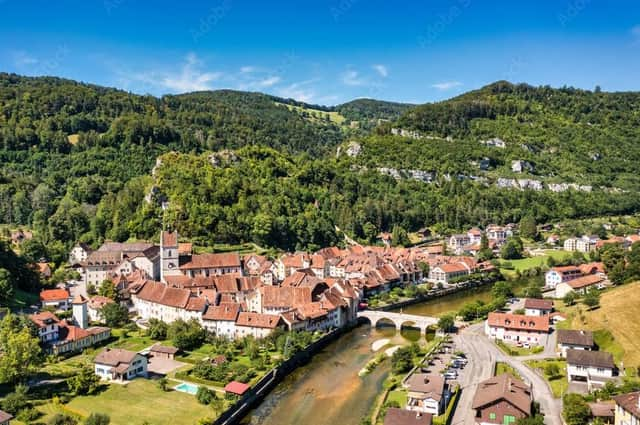

This article contains affiliate links. We may earn a small commission on items purchased through this article, but that does not affect our editorial judgement.
Standing in front of the mirror in my low-beamed guestroom, I take in my Lycra-clad form, unconvinced. I’m about to embark on what’s billed as an “easy but active” small group three-day e-biking expedition led by adventure specialists out&ABOUT Switzerland Trekking in the Jura mountains of northwest Switzerland.
Contemplating the journey, I quietly thank those who committed to attaching batteries to bicycles, for e-bikes have revolutionised access to the great outdoors. Such trips are now a possibility for those who might otherwise shudder at the prospect. Myself included.
Advertisement
Hide AdAdvertisement
Hide AdWe’re beginning in medieval Saint-Ursanne, lauded as one of Switzerland’s most beautiful villages thanks to its creaking wooden houses and cobbled streets set in a thickly-forested valley bisected by the River Doubs.
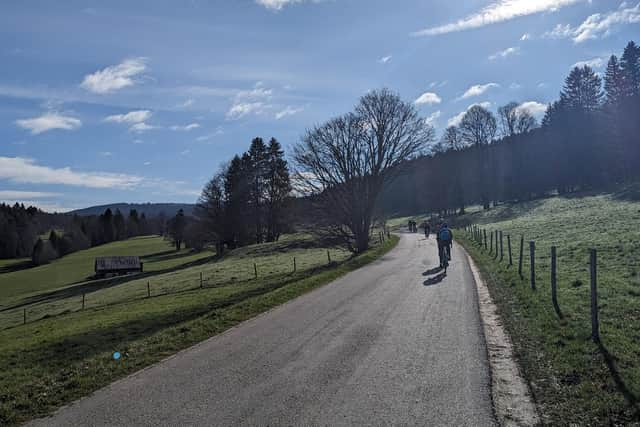

We’ll be cycling between 40km and 60 km in around four hours each day, ascending and descending up to 1,200 metres at a time as we snake our way to the finish line at Neuchâtel. Accompanying us from the comfort of his van is Besnik Saliji, our superhero bike tech who will also bring our luggage and see to charging the bikes at night.
It’s a hard start in the drizzle, clouds and enthusiasm hanging low as we’re fitted to our BMC Roadmachine AMP e-bikes. Forget the cumbersome things you rent in cities; these are super agile and lightweight. “There are three settings,” our expert local guide Valérie Chételat explains, pointing at the dial on the sleek charcoal frame. “I suggest you stay on the first, use the second on climbs and the third when you have to, to save battery.”
With sideways sleet making an appearance, I squeeze my hands into a second pair of gloves and think how very unlike the Switzerland of jagged peaks and cosmopolitan cities this is. The Jura piece of the Switzerland puzzle fits into the border with France just east of Dijon. A largely rural region, it’s characterised by a high and hilly limestone plateau with fertile plains spiked by the Jura mountain range.
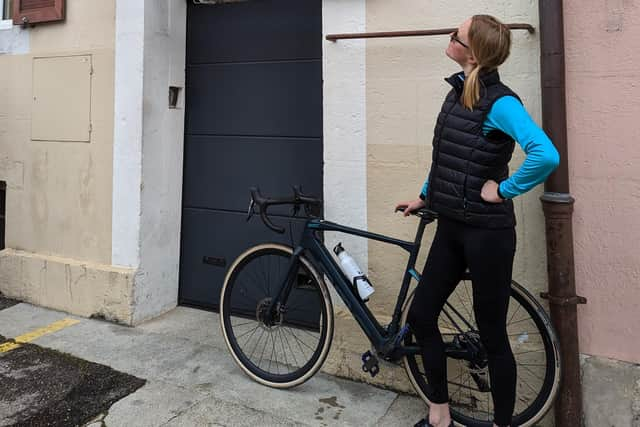

We set off in formation, getting a feel for the wheels, flirting with the ‘e’ functions, and soon meet our first sizable ascent, Mont Soleil. I move the dial up to two, eyes fixed on the strip of light that shows how the integrated battery is holding up. It’s not a free ride; my thighs tingle but we work together to reach the summit at 1,291 metres up where snow lies thin on the ground.
Whooshing down through the trees on the other side, ‘e’ firmly off, we cut along the tops of fields where farm cats sit in the long grass and cow bells jingle. It’s on our final descent into La Chaux-de-Fonds that my rear begins to protest and I roll into this historic city perching on one cheek.
Some 1,000 metres above sea level, ‘La Chaux’ is the country’s largest city at such elevation and half of a UNESCO site owing to town planning that facilitated the 19th-century watchmaking industry. This heritage is explored at the International Museum of Horology, which charts time-telling through the millennia. It’s also the birthplace of renowned modern architect, Le Corbusier, and Louis Chevrolet of car fame, who has a giant metal sculpture in his name.
Advertisement
Hide AdAdvertisement
Hide AdPowering through the initial pinch of the saddle the next morning, we leave La Chaux and fly across vibrant green fields of the Vallée des Ponts. Twisting past farms, we enter another juicy climb among fragrant fir trees, and I make for the bike’s punchy third setting before popping out into the wide expanse of verdant Val de Travers.
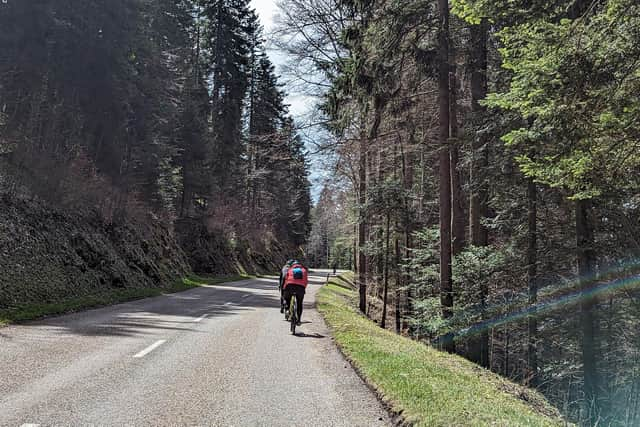

Slicing through the spring-flower-rich valley, we continue alongside the pebble-tickling waters of the Areuse and sidle into the village of Môtiers, whose star attraction is the Maison de l’Absinthe. This stylish museum details the story of absinthe production and how, when it was outlawed between 1910 and as recently as 2005, it drastically affected the local community that relied on its income and, for many, its consumption.
I indulge in a small sample or two (ok, four) from the enormous selection before gingerly cycling to the safe embrace of our hotel in neighbouring Couvet. The evening ends with much talk about The Big Climb the next morning, which sends me into anything but a deep sleep, the Green Fairy whispering in my ear.
We gather around Valérie and her map in the early sunshine to see what lies ahead. The Big Climb is up first. We resume our by now unofficial pack order and stream out of Couvet into the tree line at the foot of Le Soliat, where the road begins to steepen; I’m on the third setting by the third bend. It’s a rude awakening at 8.30 am but it’s also surmountable and I wind upwards bouncing over cattle grids at my own steady pace.
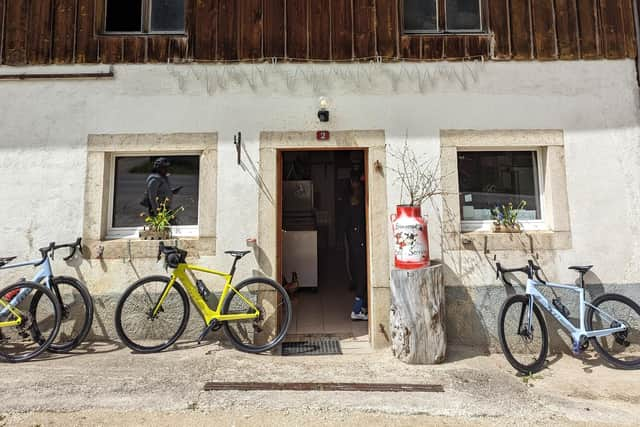

We congregate at the top and, leaving the bikes, walk past a flock of well-horned wild ibex by the edge of the magnificent rock basin, Le Creux de Van. Formed over successive Ice Ages, this sweeping cirque, or corrie, is a natural amphitheatre, some 200 metres high, 1.4km wide.
I shuffle cautiously towards the precipice, taking in the hooped striations and swifts swooping below. The hazy view melds rock, forests and valleys while light reflects off our target, Lake Neuchâtel, in the distance.
It occurs to me that what goes up must come down and it’s not long until we’re back on our bikes, surging through the high-sided Areuse Gorge. My wrists begin to ache with the pressure of steady breaking but a brief stop at the stone arch of Areuse Bridge is a welcome distraction.
Advertisement
Hide AdAdvertisement
Hide AdContinuing at speed, we burst from the gorge into another Switzerland entirely; one of snow-dusted peaks across a twinkling lake preceded by rows of vines. It’s quite the shock as we zigzag through busy towns to lakeside Neuchâtel.
It’s an emotional goodbye, all revelling in a collective sense of achievement, having explored new places and conquered mountains, literal and metaphorical. I realise then that despite my numb bum, I’m hooked: this won’t be my last expertly-led, e-powered challenge in Lycra.
Kirsten Henton was a guest of Switzerland Tourism (myswitzerland.com). She flew with SWISS (swiss.com - flights start at £72 one-way to Zurich) and travelled by train with a Swiss Travel Pass (mystsnet.com/en - prices start at £211 GBP for a three-day second-class pass), which covers all public transport (trains, buses and boats) and offers free access to over 500 museums across Switzerland.